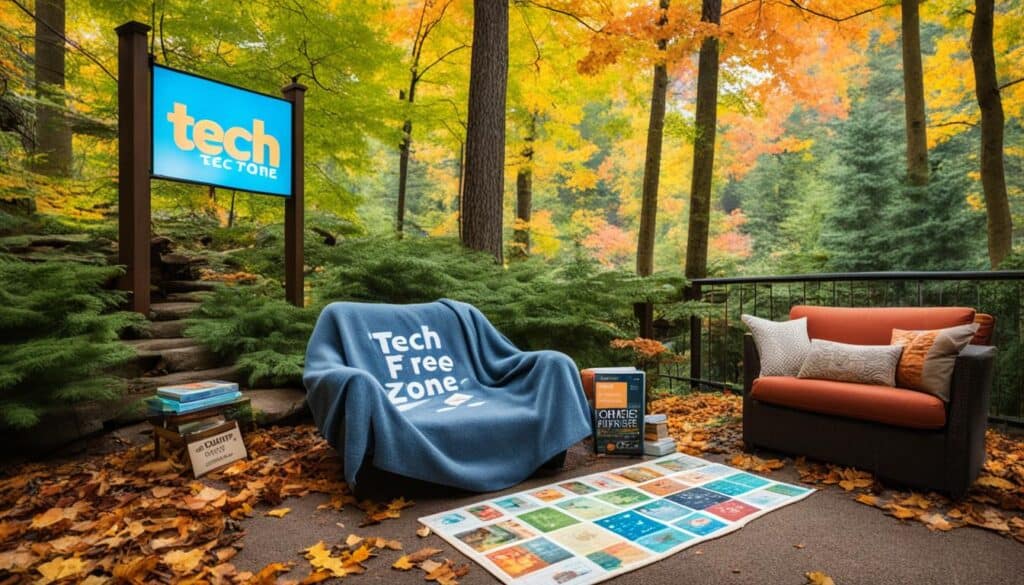In today’s fast-paced world, the concept of slow living offers a refreshing perspective. It encourages us to embrace a deliberate and mindful way of living, finding joy in simplicity and focusing on the present moment. Slow living provides a counterbalance to the constant rush and hustle of our everyday lives.
In this article, we will explore the principles and benefits of slow living. We’ll also provide practical tips on how to incorporate slow living into your daily routine, creating a harmonious balance between the fast-paced world and a slower, more intentional way of living.
Join us on this journey as we delve into the essence of slow living and discover the power it holds to enhance your overall well-being and create a deeper sense of fulfillment in your life.
The World of Constant Change

In our era of rapid technological advancements and instant gratification, we find ourselves immersed in a fast-paced world characterized by constant change. From the latest innovations to the rapid dissemination of information, our surroundings are constantly evolving. This recognition is the first step in understanding the value of embracing a slower pace and seeking balance and tranquility amidst the chaos.
The Challenge of a Fast-Paced World
In this fast-paced world, time seems to slip through our fingers. We feel an overwhelming pressure to keep up, to be constantly connected and informed. However, the constant influx of information and distractions can leave us feeling exhausted and disconnected from ourselves and others.
The Need for Balance and Tranquility
While it may seem counterintuitive, taking a step back and embracing a slower pace can bring immense benefits to our well-being. It allows us to regain control over our time and energy, fostering a deeper connection with ourselves and those around us. By creating space for stillness and reflection, we can navigate the fast-paced world with greater clarity and purpose.
Finding Peace in an Ever-Changing World
Embracing a slower pace doesn’t mean disconnecting from the world, but rather finding harmony amidst the constant flux. It means being intentional about how we spend our time and prioritizing activities that align with our values and bring us joy. By cultivating mindfulness and embracing the present moment, we can find peace and contentment even in the midst of a fast-paced world.
The Essence of Living Slowly

Living slowly is about more than just slowing down the pace of life; it’s a deliberate and mindful way of living that allows us to fully embrace the present moment. In a world that thrives on constant motion and distractions, deliberate living brings us back to what truly matters – our experience of life itself.
When we live slowly, we make a conscious choice to be intentional about how we spend our time. We prioritize quality over quantity, focusing on the things that truly bring us joy and fulfillment. Mindful way of living becomes our compass, guiding us to savor the simple pleasures and find meaning in the everyday moments.
One of the key aspects of deliberate living is shifting our mindset. We move away from the mindset of always trying to do more, achieve more, and acquire more. Instead, we cultivate contentment and gratitude for what we have, appreciating the abundance that already exists in our lives.
Living slowly also means being fully engaged in the present moment. It’s about actively experiencing life rather than passively observing it. We become more attuned to our senses, savoring the taste of our food, feeling the warmth of the sunlight on our skin, and truly listening to the people around us.
Embracing simplicity is another key aspect of living slowly.
We declutter our physical spaces, letting go of the excess possessions that weigh us down. By creating an environment of simplicity, we create clarity and a sense of calm. As we free ourselves from the burden of material possessions, we make room for the things that truly matter – our relationships, experiences, and personal growth.
Living slowly is not about avoiding productivity or ambition. It’s about finding a balance between productivity and well-being. We learn to set realistic expectations for ourselves and prioritize self-care, recognizing that our mental, emotional, and physical well-being are essential for sustainable success.
Ultimately, living slowly is a conscious choice we make to live a meaningful and fulfilling life. It’s about finding harmony between our inner values and the demands of the world around us. By embracing deliberate living and a mindful way of living, we can cultivate a deep sense of joy, contentment, and peace in our daily lives.
The Benefits

Slow living offers a multitude of benefits that positively impact overall well-being. By embracing a slower pace, individuals can experience a profound transformation in their lives.
One of the primary benefits of slow living is stress reduction. In today’s fast-paced world, stress levels can skyrocket, leading to various physical and mental health issues. By intentionally slowing down and prioritizing self-care, individuals can effectively manage stress, leading to improved mental and physical well-being.
Slow living also fosters deeper connections with others. By taking the time to be fully present in our interactions, we can nurture meaningful relationships and cultivate a sense of belonging. In a world dominated by constant distractions, slow living allows us to truly listen and empathize, fostering stronger bonds with those around us.
Furthermore, slow living encourages a greater appreciation for the present moment. By intentionally savoring each experience, we become more aware of the beauty and joy that surrounds us. This heightened awareness cultivates gratitude and a deeper sense of fulfillment in our daily lives.
Slowing down also allows for increased clarity and creativity. When we are constantly rushing, our minds become cluttered and overwhelmed, hindering our ability to think creatively and make clear decisions. Through slow living practices such as mindfulness and self-reflection, we create space for inspiration and innovation to flourish.
Combining Slow Living with a Fast Life

Slow living and the fast-paced nature of modern life may seem incompatible, but finding harmony between the two is possible. Incorporating slow-living practices into our daily routines allows us to navigate the chaos with intention and mindfulness. By setting boundaries, prioritizing self-care, creating tech-free zones, and practicing mindfulness, we can strike a balance between the tranquility of slow living and the demands of a fast life.
Setting boundaries is crucial in maintaining a sense of balance. It involves defining limits on our time and energy to protect our well-being. By establishing clear boundaries, such as turning off work notifications after a certain hour or designating specific times for relaxation and personal activities, we can create space for slow living amidst the rapid pace.
Prioritizing self-care is essential for preserving our physical and mental health. It means carving out time for activities that bring us joy and rejuvenation. Whether it’s taking a leisurely walk, practicing meditation, or indulging in a creative hobby, self-care allows us to replenish our energy and approach life with a renewed sense of clarity.
Creating tech-free zones in our homes or designating specific times to disconnect from technology can help us cultivate a deeper sense of presence and mindfulness. This allows us to fully engage with our surroundings and appreciate the beauty of the present moment. By unplugging from the constant stream of notifications and distractions, we create space for introspection, connection, and a deeper appreciation of life’s simple pleasures.
Practicing mindfulness amidst the chaos is a powerful tool for harmonizing slow living with a fast life. It involves intentionally bringing our attention to the present moment, cultivating awareness, and embracing a non-judgmental attitude. By incorporating mindful practices into our daily routines, such as mindful breathing, eating, or even completing daily tasks with full presence, we can anchor ourselves in the present and navigate the fast-paced world with grace and intention.
By combining slow living with the demands of a fast life, we can find balance, fulfillment, and a profound sense of well-being. It’s about embracing slow living as a guiding principle and incorporating it into our daily lives, rather than completely detaching from the rapid pace. Through setting boundaries, prioritizing self-care, creating tech-free zones, and practicing mindfulness, we can foster a harmony between the tranquility of slow living and the momentum of a fast life.
Setting Boundaries and Prioritizing Self-Care

In the realm of slow living, setting boundaries and prioritizing self-care are essential practices that allow individuals to protect their time and energy. By establishing clear boundaries, we can create a space where we can fully immerse ourselves in the present moment, free from distractions and obligations.
One way to set boundaries is by avoiding work-related emails and tasks during designated family time. This allows us to be fully present with our loved ones, cultivating deeper connections and creating cherished memories. By separating work and personal life, we can find a better balance and harmony in our daily routines.
Another aspect of setting boundaries is dedicating specific time slots for personal hobbies and activities. Whether it’s reading a book, practicing a musical instrument, or engaging in a creative pursuit, these moments are essential for self-expression, personal growth, and rejuvenation. By prioritizing these activities, we honor our passions and nourish our well-being.
Self-care is also a vital element of slow living. It involves intentionally prioritizing activities and practices that bring us joy, relaxation, and inner peace. This can include engaging in regular exercise, practicing mindfulness and meditation, taking soothing baths, or indulging in hobbies that ignite our passions.
By taking care of ourselves, we replenish our physical, mental, and emotional reserves, enabling us to show up fully in other aspects of our lives. In a world that often prioritizes productivity and busyness, self-care is a gentle reminder to nurture ourselves and cultivate a deeper connection with our own needs and desires.
Incorporating setting boundaries and self-care into our slow living journey allows us to reclaim control over our time, prioritize our well-being, and live with intention. By creating a foundation of personal boundaries and self-care practices, we can navigate the fast-paced world with grace and balance, fostering a sense of tranquility and fulfillment in our daily lives.
Creating Tech-Free Zones and Practicing Mindfulness

Incorporating tech-free zones and practicing mindfulness are essential aspects of slow living. In a world dominated by technology and constant digital distractions, it’s important to carve out spaces and moments in our lives where we can disconnect and be fully present.
One way to create tech-free zones is by establishing a “no phones at the dinner table” rule. This simple practice allows us to focus on enjoying our meals and engaging in meaningful conversations with loved ones without the constant presence of screens.
Another effective strategy is designating tech-free zones in the bedroom. By keeping electronic devices out of this space, we create a sanctuary free from digital distractions, allowing for better sleep and relaxation.
Additionally, taking short breaks throughout the day to focus on our breath and practice mindfulness can bring a sense of calm and centeredness. Engaging in mindful breathing exercises or meditation can help us ground ourselves in the present moment and reduce stress.
Mindful eating is another practice that aligns with slow living. By fully savoring each bite, paying attention to the flavors and textures of our food, and eating without distractions, we cultivate a deeper appreciation for the nourishment and pleasure that meals provide.
Including tech-free zones and mindfulness practices in our daily lives brings us closer to the principles of slow living, allowing us to experience greater presence, contentment, and connection with ourselves and the world around us.
Embracing Simplicity in Daily Life

Simplicity is a powerful force that can bring clarity and peace into our busy lives. In the pursuit of a simpler life, slow living encourages us to declutter both physically and mentally. It invites us to simplify our daily routines, declutter our living spaces, and let go of unnecessary commitments.
By simplifying our daily routines, we free ourselves from the constant busyness and stress that often overwhelms us. We prioritize the things that truly matter and let go of the rest. We create a sense of calm and space in our lives, allowing room for meaningful experiences and genuine connections.
Decluttering our living spaces goes beyond organizing our belongings; it is a reflection of our commitment to living with intention. We let go of the excess and surround ourselves only with what brings us joy and serves a purpose. A clutter-free environment promotes a peaceful and harmonious atmosphere, allowing us to focus and thrive.
Letting go of unnecessary commitments is an act of self-care and self-awareness. We evaluate our priorities and make conscious choices about where we invest our time and energy. By saying no to obligations that don’t align with our values and goals, we create space for what truly matters.
Embracing simplicity in daily life is an ongoing journey. It is a deliberate choice to prioritize what brings us joy, peace, and fulfillment. By simplifying our routines, decluttering our spaces, and letting go of unnecessary commitments, we create a life that is aligned with our values and aspirations.
The Principles of Slow Living

Slow living is rooted in a set of principles that align with a deliberate and mindful approach to life. By embracing these principles, individuals can cultivate a sense of balance, find fulfillment, and discover a deeper purpose in their everyday existence.
Mindful Living
Mindful living is at the core of slow living. It involves being fully present in each moment, aware of one’s thoughts, feelings, and surroundings. By practicing mindfulness, individuals can develop a greater sense of clarity, gratitude, and appreciation for the simple joys of life.
Embracing Simplicity
Embracing simplicity is another principle of slow living. This entails decluttering both physical and mental spaces, focusing on what truly matters, and letting go of unnecessary material possessions and commitments. By simplifying our lives, we create room for meaningful experiences and find contentment in the beauty of simplicity.
Nurturing Connections and Relationships
Slow living emphasizes the importance of nurturing connections and relationships with others. This means prioritizing quality time with loved ones, deepening meaningful friendships, and fostering authentic connections. By investing in relationships, individuals can experience a sense of belonging, support, and fulfillment.
A Thoughtful Approach to Work
Slow living extends to the realm of work, encouraging a thoughtful and intentional approach. This involves setting realistic expectations, finding meaning in one’s work, and cultivating a healthy work-life balance. By adopting a slower pace and valuing the quality of work over quantity, individuals can create a more fulfilling and sustainable work environment.
By embracing the principles of slow living, individuals can navigate the fast-paced world with grace and intentionality. This allows for a deeper connection to oneself and others, a sense of fulfillment, and an appreciation for the present moment.
The Power of Mindful Living

Mindful living is a fundamental aspect of slow living. It involves being fully present in the moment, appreciating the richness of life, and breaking free from autopilot mode. By cultivating mindfulness, individuals can experience greater contentment, fulfillment, and a profound sense of well-being.
In our fast-paced world, it is easy to get caught up in the chaos and distractions that surround us. Mindful living offers a powerful antidote to this constant rush, allowing us to slow down, reconnect with ourselves, and find peace amidst the storm. It is about shifting our focus from the past or the future and grounding ourselves in the present moment.
The Benefits of Mindful Living
By practicing mindfulness in everyday life, we can unlock a multitude of benefits. Firstly, it helps to reduce stress and anxiety, as it encourages us to let go of worries and concerns that may be consuming our thoughts. Mindfulness also improves our mental and physical well-being by promoting self-awareness, emotional regulation, and an overall sense of balance.
Furthermore, mindful living allows us to cultivate deeper connections and relationships with others. By being fully present and attentive during conversations and interactions, we show respect and empathy, fostering meaningful connections and nurturing bonds. This not only enhances our social well-being but also brings a sense of fulfillment and belonging.
Incorporating Mindfulness Into Daily Life
Integrating mindfulness into our daily routines is key to reaping its benefits and experiencing the power of mindful living. Here are some practical ways to incorporate mindfulness into everyday life:
- Begin each day with a few minutes of mindful breathing or meditation to set a calm and focused tone for the day ahead.
- Practice mindful eating by savoring each bite and appreciating the flavors, textures, and nourishment of the food.
- Take short mindfulness breaks throughout the day to pause, breathe, and recenter your attention.
- Engage in mindful movement activities like yoga, tai chi, or walking meditation to connect your mind and body.
- Carve out dedicated time for self-reflection and introspection, allowing yourself to explore your thoughts and emotions without judgment.
Remember, mindfulness is a skill that is developed over time, and consistency is key. By making a conscious effort to incorporate mindfulness into our lives, we can tap into the power of mindful living and experience profound positive changes in our overall well-being.
Nurturing Connections and Relationships

Slow living recognizes the value of cultivating meaningful connections and relationships amidst the hustle and bustle of life. In a fast-paced world, where time often feels scarce, prioritizing time and attention to nurturing these bonds becomes even more crucial.
Whether it’s spending quality time with family, having heart-to-heart conversations with friends, or reconnecting with oneself, nurturing relationships is an integral part of the slow living philosophy. By slowing down and making intentional efforts, individuals can build deeper connections and create lasting memories that transcend the hurried pace of life.
One way to nurture connections is through shared experiences and creating traditions. This could be as simple as cooking a meal together, going for peaceful walks, or engaging in mindful activities. These shared moments not only strengthen the bond between individuals but also provide an opportunity to create meaningful memories that endure.
Listening is another key aspect of fostering meaningful relationships. By actively listening and being fully present in conversations, individuals can show their loved ones that they are valued and heard. This deepens the connection and helps build trust and mutual understanding.
Additionally, practicing gratitude and expressing appreciation can go a long way in nurturing relationships. Taking the time to acknowledge and express gratitude for the presence and support of loved ones strengthens the bond and fosters a culture of gratitude within relationships.
Lastly, slow living encourages individuals to create space for solitude and self-reflection. By taking time for oneself, whether it’s through meditation, journaling, or engaging in hobbies, individuals can reconnect with their own thoughts and emotions. This self-reflection not only enhances self-awareness but also allows individuals to show up fully in their relationships, bringing authenticity and depth to their connections.
Nurturing connections and relationships requires intentionality and commitment. It’s about making conscious choices to prioritize meaningful interactions and invest time and energy in fostering these bonds. By doing so, individuals can experience the richness and fulfillment that come from cultivating genuine and meaningful relationships in the slow living journey.
The Art of Slow Work

Slow living isn’t limited to our personal lives; it extends to the realm of work as well. Embracing a slow and mindful approach to work can have a profound impact on our productivity, well-being, and overall satisfaction. By consciously shifting our mindset and adopting a more deliberate approach, we can create a healthier and more sustainable work environment.
One of the key principles of slow work is focusing on quality over quantity. Rather than prioritizing the number of tasks completed or hours spent working, slow work emphasizes the value and impact of the work itself. By placing a greater emphasis on the outcome and the value we bring to our work, we can avoid the pressure to constantly do more in less time.
Setting realistic expectations is another important aspect of slow work. Recognizing our limitations and understanding that we are not meant to be constantly productive allows us to establish realistic goals and timelines. This reduces stress and burnout, allowing us to sustain our energy and motivation in the long run.
In a fast-paced work environment, it can be tempting to constantly multitask and rush through tasks. However, slow work encourages us to be fully present and engaged in each task. By practicing mindfulness and focusing on one task at a time, we can improve our attention to detail, enhance the quality of our work, and find a greater sense of fulfillment in our accomplishments.
Slow work also emphasizes the importance of work-life balance. By setting boundaries between work and personal life, we can create space and time for rest, relaxation, and rejuvenation. This allows us to bring a fresh and focused perspective to our work, enhancing our creativity and problem-solving abilities.
Embracing a mindful approach to work not only benefits individuals but also contributes to a positive work culture. By encouraging slower and more intentional work practices, organizations can foster an environment where employees feel valued, supported, and able to thrive both personally and professionally. Slow work promotes collaboration, creativity, and a healthier work-life integration.
Incorporating slow work into our lives may require some adjustments and a shift in mindset. However, the rewards are worth it. By embracing the art of slow work, we can find greater purpose, fulfillment, and well-being in our professional lives.
Embracing Slow Living Today

Despite the glorification of speed and instant gratification in our fast-paced world, embracing slow living offers a gentle reminder to savor life’s precious moments. It is about intentionally slowing down and finding joy in simplicity, even amidst a bustling daily routine.
Incorporating elements of slow living into our daily lives can lead to greater contentment, fulfillment, and overall well-being. It’s not about completely eliminating productivity or efficiency; rather, it’s about finding a healthy balance and embracing a mindful approach to life.
1. Enjoying a Slow-Cooked Meal
One simple way to embrace slow living is through the enjoyment of a slow-cooked meal. Instead of rushing through quick meals or relying on fast food, take the time to prepare a delicious, home-cooked meal with fresh ingredients. Allow the smells and flavors to fill the kitchen, and relish the experience of savoring each bite.
2. Taking a Digital Detox
In today’s digital age, it is crucial to disconnect and recharge. Consider taking regular breaks from screens and technology, whether it’s for an hour a day, a weekend, or even longer. Use this time to engage in activities that bring you joy, such as reading a book, going for a walk in nature, or spending quality time with loved ones.
3. Relishing a Quiet Moment
Incorporate moments of stillness and solitude into your daily routine. Find a quiet spot where you can sit, breathe, and reflect. Use this time to be present, without distractions or interruptions. Embrace the simple pleasure of just being, allowing your mind to unwind and recharge.
By incorporating these aspects of slow living into your daily life, you can create a harmonious balance between the fast-paced world and a more deliberate, mindful way of living. Embracing slow living is not about completely halting the busyness of life, but rather about finding the beauty in being present, cherishing the small moments, and fostering a deeper sense of well-being.
Rediscovering the Beauty of Slow Living
In today’s fast-paced world, where hustle and productivity are celebrated, it’s easy to lose sight of the beauty that lies in living slowly. Slow living offers a respite from the constant rush, allowing individuals to find peace, meaning, and fulfillment in their lives.
Embracing slow living is a gentle reminder to step back, take a deep breath, and savor each moment in the midst of a fast life. It’s about creating space for moments of stillness and reflection, cherishing the simple joys that often go unnoticed.
By consciously slowing down and nurturing their well-being, individuals can rediscover the beauty of a slow and purposeful existence. Finding balance between work, rest, and self-care becomes a priority, enabling them to cultivate a deep sense of contentment and connection with themselves and the world around them.
 Fullersears
Fullersears





